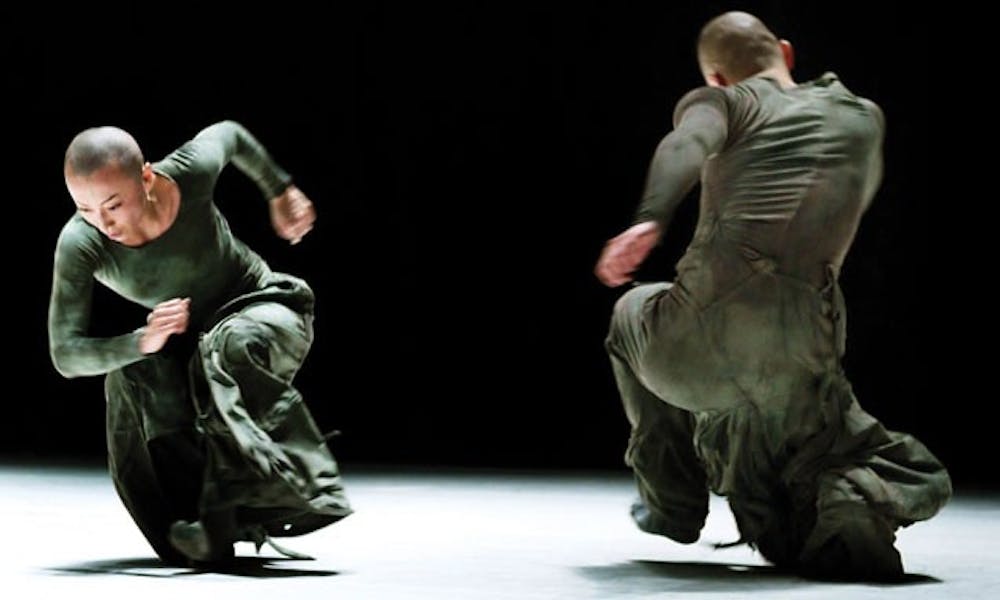Since its founding in 2008 by Tao Ye, TAO Dance quickly earned a reputation as China’s most promising up-and-coming modern dance troupe. The troupe made its U.S. debut at the American Dance Festival June 20-22 with its newest work, “2” (2011). Recess’ Sanette Tanaka sat down with Tao to discover what drives his creative, bold choreography. Translated by Alison Friedman, director and founder of Ping Pong Productions.
The Chronicle: You previously danced with the Shanghai Army Song and Dance Ensemble, then Jin Xing Dance Theater in Shanghai and the Beijing Modern Dance Company. Why did you decide to found your own company in 2008?
Tao Ye: From the very beginning—with the first company—I was trying to find my own path. But each time I was not satisfied, so I switched to a new company to try a new direction. After I felt I tried all my options, the only option left was to start my own company. Being a member of a company allows you to study and learn. But after you have studied and learned, you need to find your own way. In a country as large as China, we need more and more people to blaze their own unique paths, especially because modern dance belongs to the individual.
TC: Have you ever felt pressure from the Chinese government to conform in a certain way?
TY: China is really interesting. It is a very big country, and you can easily find your freedom. There are a lot of ways to do things because [the government] does not have set ways of controlling things. But because of this freedom, it is easy to become lost and directionless. Because of the lack of any systematic structures for artists, you can have a lot of freedom but you also have no support structures, like foundations to support individual artists. And now the government is so focused on economic development, they put commercialism and art in one basket. Everything has become very commercialized.
TC: Despite the lack of support, TAO became an incredibly prominent dance troupe in a short time. To what do you attribute this success?
TY: First and foremost, we were not starting from zero. When we came together, we all had years of experience and background from having worked with different companies. Everyone was coming together and combining forces. It might seem sudden, but it is actually a very natural progression. The issue we are facing now is how to maintain that burst [of success] and keep it going.
TC: In many ways, modern dance seems like an oxymoron when set in the context of traditional China. How do you reconcile China’s modern and traditional cultures through your choreography?
TY: My understanding of modern dance is that modern is not about an era—it is about this moment right now. Dance is about the body in motion. Modern dance is using the body to think and experience in the moment. Because of this understanding, modern dance does not belong to a religion, race, culture—it belongs to that moment and the body that is experiencing it, the audiences watching it. This physical understating transcends the East and West, or traditional and modern. It is all open source material to draw from.
TC: Where do you draw inspiration for your choreography?
TY: Inspiration comes all the time, but it comes quickly and goes quickly. What interests me now is more the choreographic process. When creating a work, you cannot rely on inspiration; you have to rely on craft and visual aesthetics to make an inspiration into a piece. Dance is not just about inspiration, it is about your life outlook and attitude.
TC: You are premiering your U.S. debut at the ADF this summer with the premiere of your newest work, “2.” Can you tell me a bit more about the process of creating it and what the audience should expect?
TY: ADF inviting us here was like a giant gift that we are so appreciative of, but at the same time, we do not want to get overly excited. This is a start, but we need to be focused on our long-term sustainability. This piece [“2”] is not about educating or telling an audience something— the performance is a point of communication with the audience. I hope the audience uses that time in the theater to let their imagination open up and explore utter freedom in the piece. I hope during the performance we [the dancers and the audience] can communicate in another sphere together.
Get The Chronicle straight to your inbox
Signup for our weekly newsletter. Cancel at any time.

